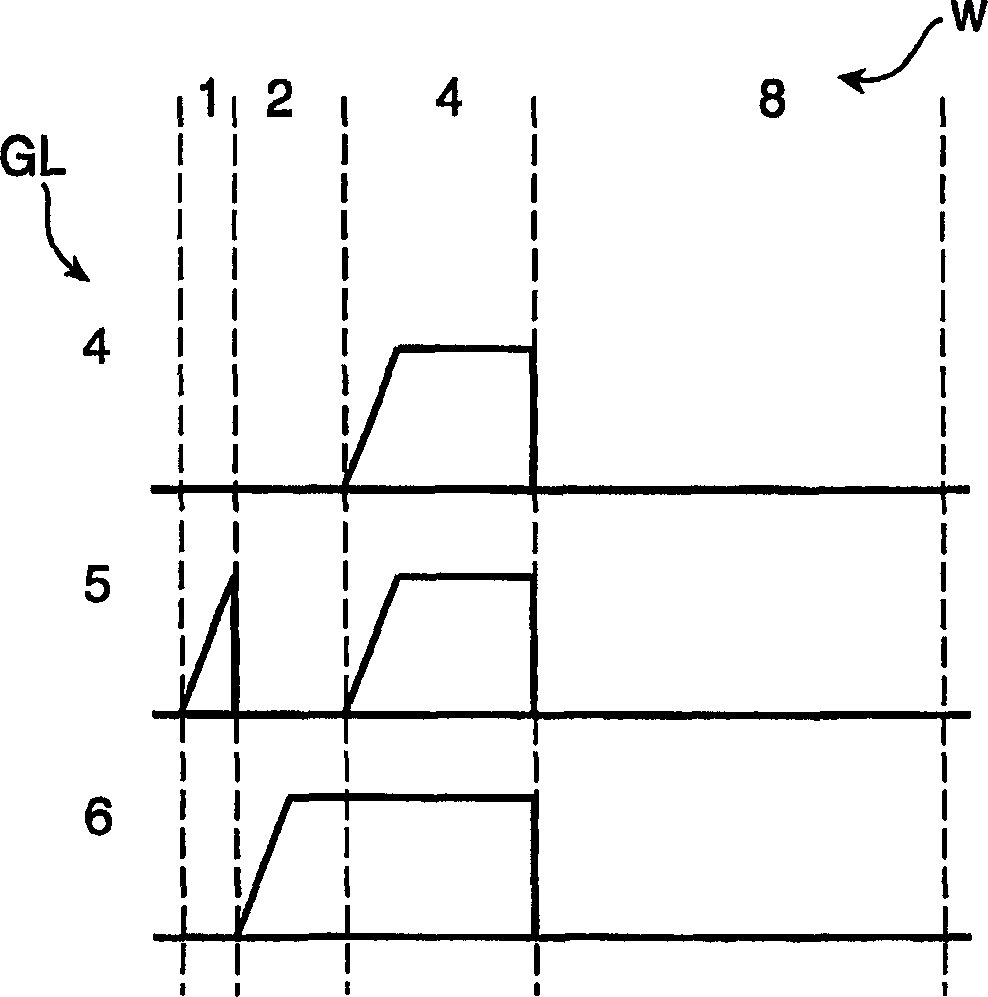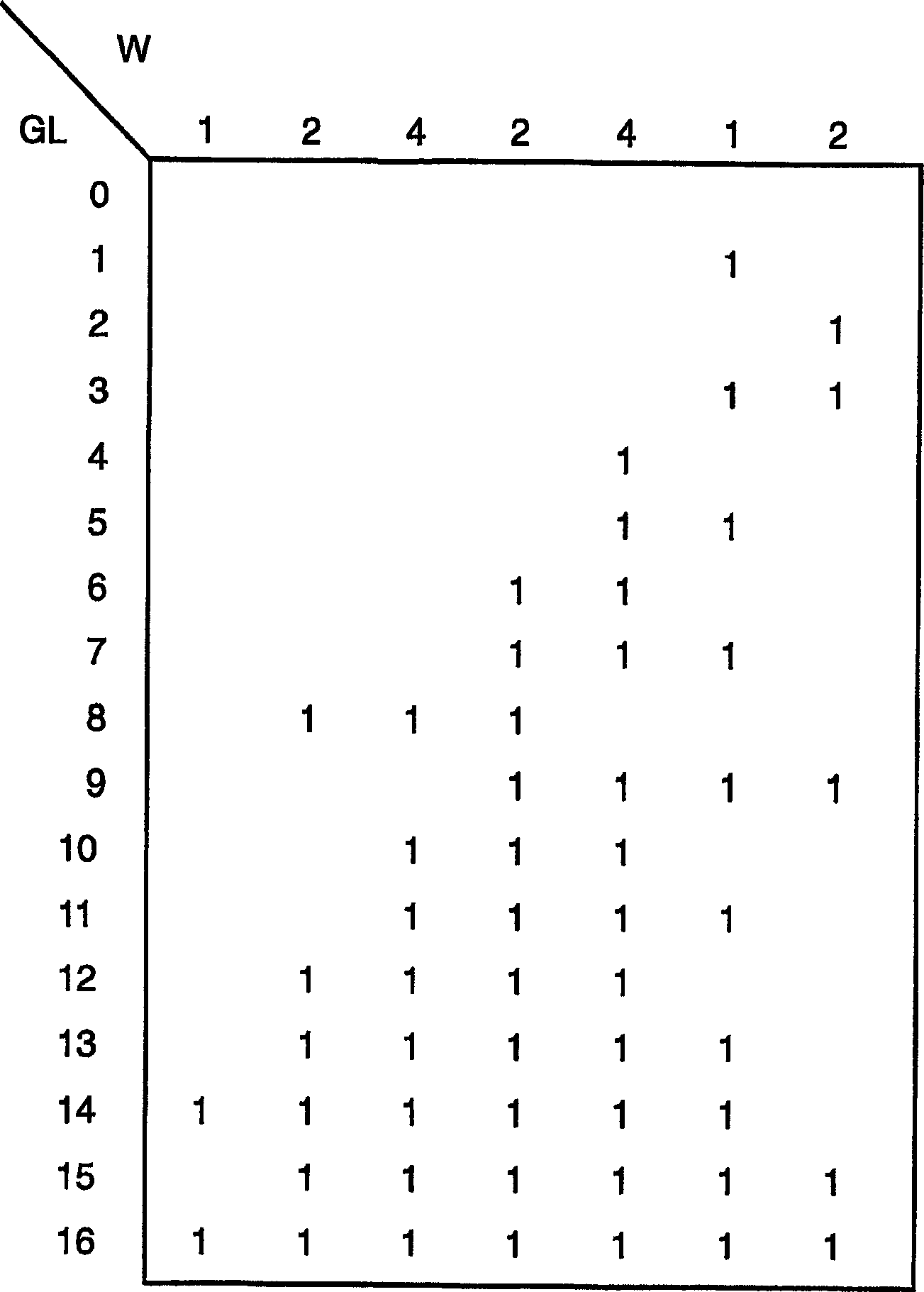Subfield driving pixels in a display device
A display device and pixel technology, applied in the direction of static indicators, instruments, etc., can solve problems such as long time, and achieve the effect of increased life and reduced loss
- Summary
- Abstract
- Description
- Claims
- Application Information
AI Technical Summary
Problems solved by technology
Method used
Image
Examples
Embodiment Construction
[0044] Figure 3-7 The first embodiment of the present invention is described in . to have image 3 Starting with the rightmost set of subfields corresponding to 4-1-2 weights W, the encoding scheme in these examples is designed. then in image 3 This sequence of subfields is continued (from right to left) with a weight W of 2-4-2-1 in the coding scheme of . This results in a coding scheme in which 17 different gray levels GL are generated on a linear scale from 0 to 16 using 7 subfields. Note that all gray levels GL consist of adjacent subfields, and the resulting addressing periods will have different start / end points. Figure 4 This situation is illustrated in , showing the generation of gray levels GL with values 4, 5 and 6. Thus, in the case of eg a PLED display, only one rise time tR is required per frame, independent of the gray level GL to be produced.
[0045] It should be noted that with the figure 1 In contrast to the pure Pulse Width Modulation (PWM) mecha...
PUM
 Login to View More
Login to View More Abstract
Description
Claims
Application Information
 Login to View More
Login to View More - R&D
- Intellectual Property
- Life Sciences
- Materials
- Tech Scout
- Unparalleled Data Quality
- Higher Quality Content
- 60% Fewer Hallucinations
Browse by: Latest US Patents, China's latest patents, Technical Efficacy Thesaurus, Application Domain, Technology Topic, Popular Technical Reports.
© 2025 PatSnap. All rights reserved.Legal|Privacy policy|Modern Slavery Act Transparency Statement|Sitemap|About US| Contact US: help@patsnap.com



